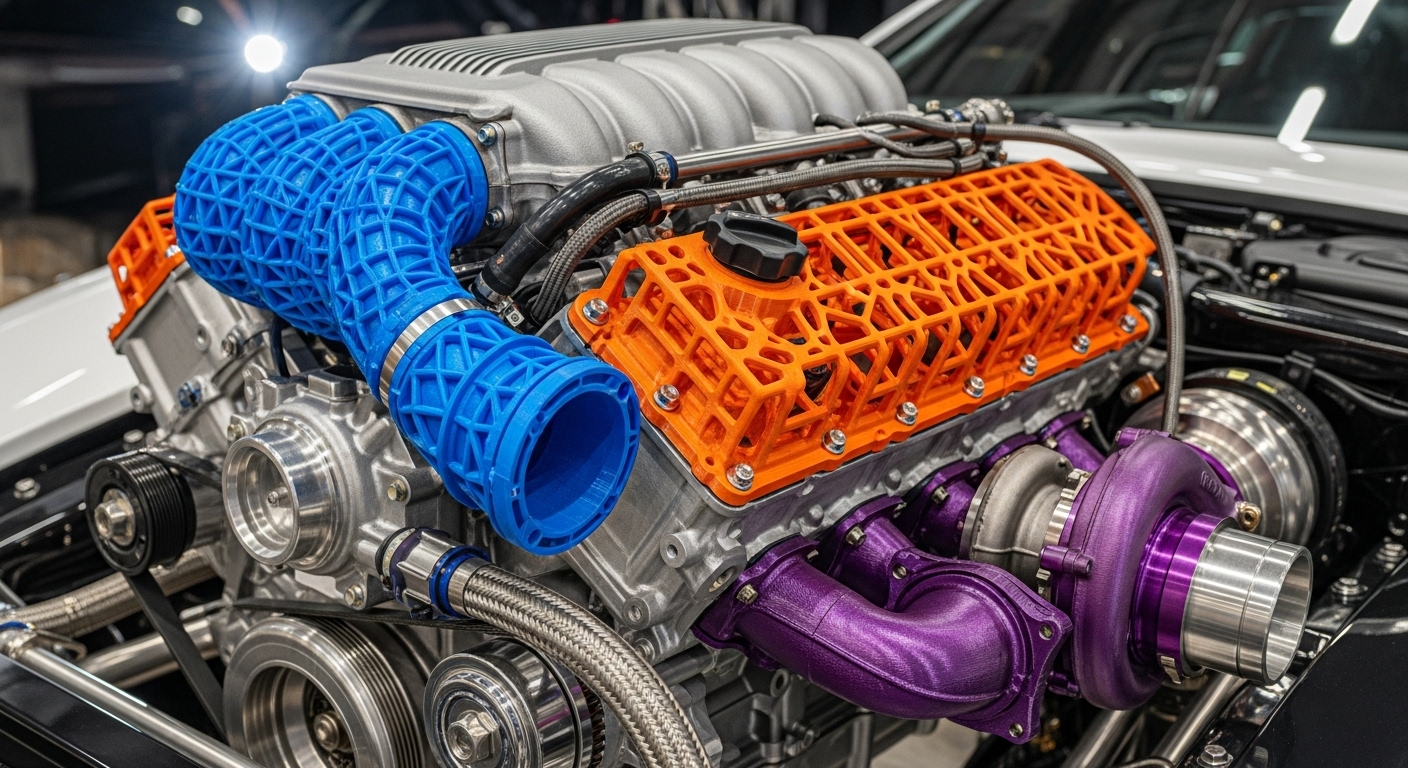Introduction
The automotive industry has always been a hub for innovation—and in 2025, 3D printing is steering it toward a faster, smarter, and more sustainable future. Whether it’s prototyping new vehicle designs, creating lightweight components for electric vehicles (EVs), or producing customized parts, additive manufacturing is now central to modern auto manufacturing strategies.
Why Automakers Are Turning to 3D Printing
Automotive production demands speed, precision, cost efficiency, and constant innovation. 3D printing checks all these boxes by enabling rapid prototyping, reducing tooling costs, and simplifying supply chains.
Key Benefits:
- 🚗 Faster Time-to-Market: Engineers can design, test, and iterate within days.
- 🧩 Lightweight Design: Reducing vehicle weight improves fuel economy and EV range.
- ⚙️ Tooling & Fixtures: Custom tools and jigs can be printed quickly and cheaply.
- 🏁 Motorsport Agility: Race teams use 3D printing to develop performance parts between events.
Emerging 2025 Automotive Trends Driven by 3D Printing
1. Electric Vehicle (EV) Component Innovation
As the EV market grows, 3D printing is being used to design lighter battery casings, cooling channels, and structural supports that maximize efficiency and reduce assembly complexity.
2. Spare Parts On-Demand
Instead of warehousing thousands of parts, manufacturers and dealerships can now print replacement components when and where they’re needed—especially helpful for vintage or rare vehicles.
3. Customization at Scale
From dashboard designs to seat brackets and trims, 3D printing enables mass personalization without the tooling costs traditionally associated with new SKUs.
4. Sustainability in Manufacturing
3D printing reduces waste by using only the material necessary to create a part. Many automotive firms are also investing in recycled or bio-based filaments to align with carbon-neutral goals.
5. Topology Optimization
Generative design and lattice structures—printable only via additive manufacturing—help engineers build stronger yet lighter components, especially in motorsport and aerospace crossovers.
Case Study: BMW & 3D-Printed Fixtures
BMW uses 3D-printed fixtures and jigs on the assembly line for ergonomic improvements and speed gains. These parts are lighter, more adaptable, and faster to produce than traditionally machined versions.
Challenges in Widespread Adoption
- Scalability: While ideal for low-to-medium volume, additive manufacturing still lags behind traditional injection molding for high-volume parts.
- Standardization: Material certifications and print quality need rigorous consistency for safety-critical components.
- Workforce Training: Adopting 3D printing demands new design thinking and software skills in the engineering team.
Conclusion
In 2025, 3D printing is no longer just a prototyping tool in the automotive world—it’s a core enabler of innovation, customization, and supply chain flexibility. As electric, autonomous, and connected vehicles evolve, additive manufacturing will play a vital role in shaping their performance and design.


